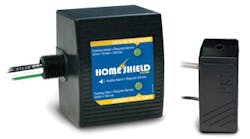The recent case of Ember Coolbaugh, a nine-year-old girl from Pinellas Park, Fla., serves as a sobering reminder of the hidden electrical dangers relating to touch voltage conditions. Playing in a neighbor's yard, Ember touched a copper pipe connected to an outdoor water heater and felt a tingle. After calling her friends over, she touched the pipe again and was electrocuted. Ironically, the homeowners had reported a problem to their utility prior to the tragedy after receiving a shock in the kitchen. However, after taking a voltage reading and inspecting the service to the meter, workers found nothing wrong and recommended that the customer call a licensed electrician.
This accident hit especially close to home for Pine Brumett, president of Spring Hill, Fla.-based PSG Enterprises, a family owned and operated supplier of power quality and surge protection devices, for several reasons. He not only has a nine-year-old daughter, but has also spent the past three years developing a product that could prevent this exact type of accident.
Since 1993, PSG has devoted most of its resources toward developing residential surge suppression offerings. According to Brumett, those arrester packages are solid performers, but they suffer from one functional limitation: they all depend on an adequately grounded system to operate properly but can do nothing to monitor that connection. That's why the company called on strategic partner EFI Electronics, a Schneider Electric company based in Salt Lake City, to help design and manufacture a better working and safer surge arrester that would also monitor ground resistance.
The result of that partnership is the HomeShield monitoring and protection system, which features a patented system monitoring and recognition technology (S.M.A.R.T.) design that monitors the earth ground resistance, presence of current, and presence of voltage on the electrical service ground conductor. The UL-Listed device's intelligent dual-stage hybrid arrester circuitry makes it possible to distinguish between “true” transient surge events and overvoltage conditions. By alerting homeowners to a potentially hazardous condition, it lets them take corrective action before a potentially catastrophic event occurs. “At first people think it's like a smoke detector for your electrical system,” Brumett explains. “But when a smoke detector goes off, you've already got a problem. When the alarm sounds and LED indicators [on the HomeShield] illuminate, the condition is still in its infancy and you have the ability to correct it.”
Scott McNeil, energy solutions representative and licensed master electrician at New Hampshire Electric Cooperative, a public utility co-op based in Plymouth, N.H., can attest to this claim firsthand. He has discovered and corrected several potentially hazardous conditions, including a shorted hot water tank, well pump, and air conditioner. He has not only installed at least 60 of the HomeShield devices for his employer since April, he also bought one for his own house.
Although installation is relatively simple, the process must be undertaken by a licensed electrician or utility representative because it involves work at the electric meter or the main service panel or disconnect. “The connections are basically made to the load lugs or the bottom jaws of the meter,” McNeil says. “There is a ground sensor that interfaces with the ground electrode conductor. “
Although life safety was the driving force behind the development of HomeShield, cost was also a concern. In fact, Brumett went into the venture with a price cap of $200. “To me, it could be the best product in the world, but if you minimize or limit affordability, it's not going to be used,” he says.
For more information, visit www.homeguardsystems.com.




